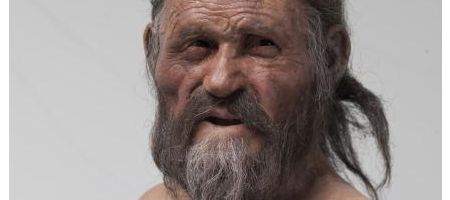Clogged arteries may have little to do with today’s high-fat diets or couch potato habits: ancient hunter-gatherers had the same problem too.

Nearly 4.6 million Americans suffer from the plaque build-up that causes blood clots, heart attacks and strokes. Indeed, atherosclerotic vascular disease is the leading cause of death in the developed world.
But our lifestyles may not be to blame.
“This is not a disease only of modern circumstance, but a basic feature of human aging in all populations,” says Caleb Finch of the University of Southern California. “Turns out even a Bronze Age guy from 5,000 years ago had calcified, carotid arteries.”
The researchers carried out CT scans on 137 mummies from four continents – and found artery plaque in every single population studied, from preagricultual hunter-gatherers in the Aleutian Islands to the ancient Puebloans of southwestern United States.
Their findings show that while modern lifestyles can accelerate the development of plaque, its prevalence across human history shows it may have a more basic connection to inflammation and aging.
Egyptian mummies have already been shown to have calcified patches on their arteries indicative of advanced atherosclerosis. The new study takes this finding further by examining mummies from four drastically different climates and diets – and from cultures that mummified regular people, including ancient Peruvians, Ancestral Puebloans, the Unangans of the Aleutian Islands and ancient Egyptians.
“Our research shows that we are all at risk for atherosclerosis, the disease that causes heart attacks and strokes – all races, diets and lifestyles,” says Gregory Thomas of Long Beach Memorial.
“Because of this we all need to be cautious of our diet, weight and exercise to minimize its impact. The data gathered about individuals from the pre-historic cultures of ancient Peru and the Native Americans living along the Colorado River and the Unangan of the Aleutian Islands is forcing us to think outside the box and look for other factors that may cause heart disease.”
Overall, the researchers found probable or definite atherosclerosis in around a third of the mummies studied, both male and female.
“A common assumption is that the rise in levels of atherosclerosis is predominantly lifestyle-related, and that if modern humans could emulate pre-industrial or even pre-agricultural lifestyles, that atherosclerosis, or at least its clinical manifestations, would be avoided,” says Randall Thompson of Saint Luke’s Mid America Heart Institute.
“Our findings seem to cast doubt on that assumption, and at the very least, we think they suggest that our understanding of the causes of atherosclerosis is incomplete, and that it might be somehow inherent to the process of human aging.”






